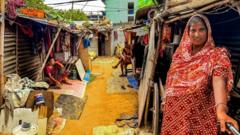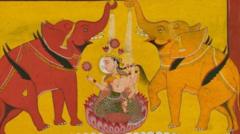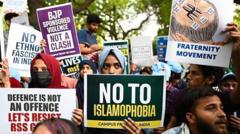In the sacred city of Prayagraj, India, a remarkable spectacle is underway as the Maha Kumbh Mela gets underway, the largest religious gathering in the world. Set to host around 400 million Hindu pilgrims, this event invites devotees, tourists, and public figures to engage in spiritual rituals along the banks of the Ganges and Yamuna rivers over the course of several weeks.
The Maha Kumbh Mela, known as the "great festival of the sacred pitcher," draws its significance from Hindu mythology, symbolizing the eternal battle for nectar of immortality between gods and demons. The ceremony features sacred dips in the holy waters, believed to absolve individuals of their sins and foster spiritual renewal.
Participants are welcomed into a vibrant atmosphere where processions filled with colorful attire, songs, and dances create a lively spirit of unity and devotion. Many individuals make the journey from all corners of India and beyond to partake in this spiritually enriching experience, gathered at a spot also linked to the legendary river Saraswati.
As government officials prepare for the influx of pilgrims, they are also implementing measures to avert potential safety hazards, including stampedes and health risks, ensuring that this grand assembly can unfold smoothly. The Maha Kumbh Mela is not only a profound religious celebration but has also evolved into a focal point of cultural identity, political significance, and community togetherness—forever intertwining faith and collective human experience.






















